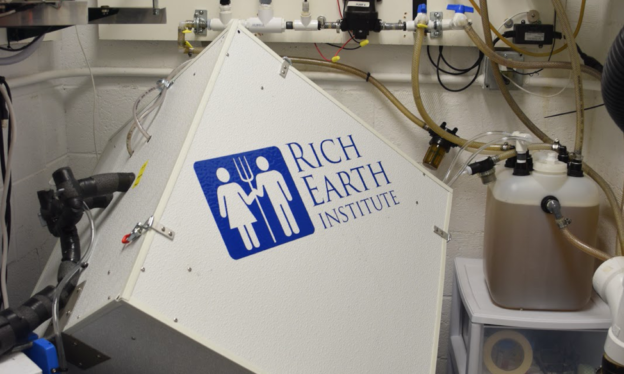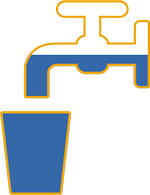Back to all Research Results
Treatment Technology
Research Question: What treatment is needed to produce a safe and useful fertilizer?
Dates: 2015-present

An adult typically produces 150 gallons (570 liters) of urine each year. This urine contains most of the fertilizer needed to grow a year’s worth of food, but its large volume makes it difficult to store and transport to farms where it can be used — particularly if urine is collected in cities far from agricultural areas.
A variety of strategies have been tried by other researchers for removing water from urine and reducing its volume to create a concentrated product. These include distillation, evaporation, freeze concentration, and reverse osmosis. Reverse osmosis is the most energy efficient, but it has two major drawbacks: 1) because the nitrogen in stored urine is largely in the form of ammonia, a portion of it is able to pass through the membrane instead of being retained in the concentrate, and 2) the membranes used are sensitive to clogging from solids in urine.
The Rich Earth Institute has tested two styles of reverse osmosis system from 2015 to 2019, and found that effective concentration up to a factor of 5x is achievable when fresh urine is immediately acidified using vinegar, in order to keep the nitrogen in the form of urea, rather than the ammonia that forms in untreated, stored urine. This allows for good retention of nitrogen in the final product, and also helps reduce fouling by preventing the formation of mineral deposits. However, the membrane still clogs over time, requiring ongoing maintenance.
Our current research focuses on using freeze concentration, in which we partially freeze urine until ice crystals form. These crystals are made of nearly pure water, which means that the unfrozen liquid contains almost all the nutrients. By draining the unfrozen liquid and discarding the ice, we can concentrate the fertilizer into a smaller volume of liquid. In collaboration with the University of Michigan, we have retrofitted one of their engineering buildings with urine-diverting fixtures and a small treatment works. We are developing a freeze concentration system to install there, as a model for building-scale production of concentrated urine-derived fertilizer.

